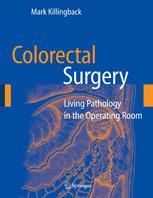

Most ebook files are in PDF format, so you can easily read them using various software such as Foxit Reader or directly on the Google Chrome browser.
Some ebook files are released by publishers in other formats such as .awz, .mobi, .epub, .fb2, etc. You may need to install specific software to read these formats on mobile/PC, such as Calibre.
Please read the tutorial at this link: https://ebookbell.com/faq
We offer FREE conversion to the popular formats you request; however, this may take some time. Therefore, right after payment, please email us, and we will try to provide the service as quickly as possible.
For some exceptional file formats or broken links (if any), please refrain from opening any disputes. Instead, email us first, and we will try to assist within a maximum of 6 hours.
EbookBell Team

4.3
8 reviewsFrom the Foreword
"The experienced surgeon will appreciate this book by recognizing the details and exquisitely rendered images that call to mind similar cases encountered. For the surgeon or trainee relatively new to the practice of colorectal surgery, the graphic presentation of the surgical pathology, with the accompanying succinct and informative text, will make the acquisition of this book a worthwhile one."
Victor Fazio, M.D. and Stanley Goldberg, M.D.
As Lord Moynihan frequently mentioned in his legendary lectures, surgeons have the unique opportunity to study pathology in vivo, or in a living state. The pathology is seen in relation to normal anatomy, leading to important surgical judgments that ensure only diseased tissue will be removed, and with minimal damage or sacrifice to normal structures. In addition to influencing surgical design making, observation of living pathology offers a glimpse into the disease process and provides a valuable assessment of the morphological features of the specimen before it is preserved with formalin.
Colorectal Surgery: Living Pathology in the Operating Room is a unique collection of beautifully illustrated cases focusing on the pathology as much as the operative technique used to remove the diseased tissue. One hundred case reports describe unusual findings, or unusual manifestations of more common conditions, encountered by the author during his 40-plus years in practice as a colorectal surgeon. All of the drawings in the book were sketched immediately after the procedures in order to capture the details and significance of the specimen. As finished drawings, Dr. Killingback’s beautiful images increase the reader’s conceptual knowledge of surgical pathology and how it presents. Accompanying text, photos, and diagnostic studies provide the details of patient management and shed further light on the intrinsic art and science of interpreting living pathology, making this a must-have resource for colorectal surgeons and residents as well as general surgeons and surgical pathologists.